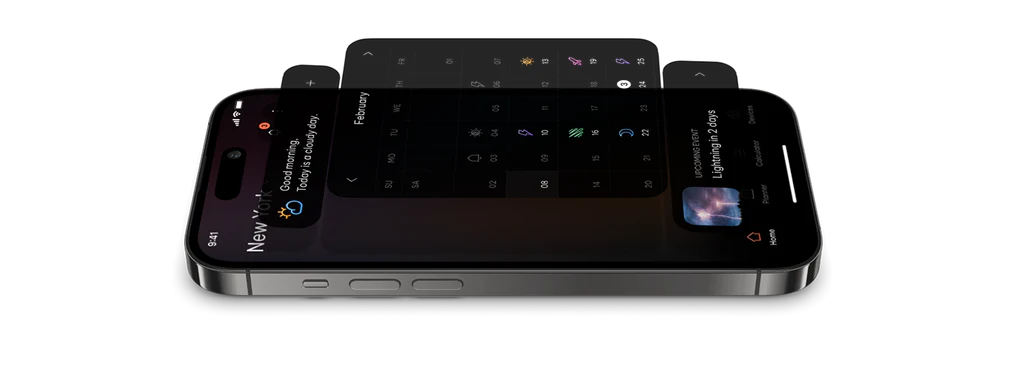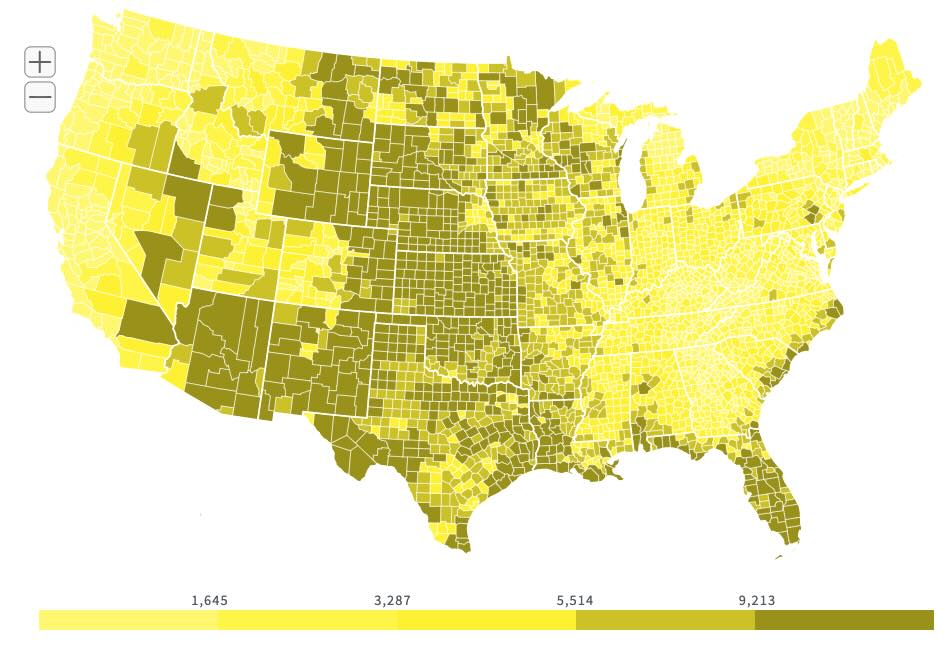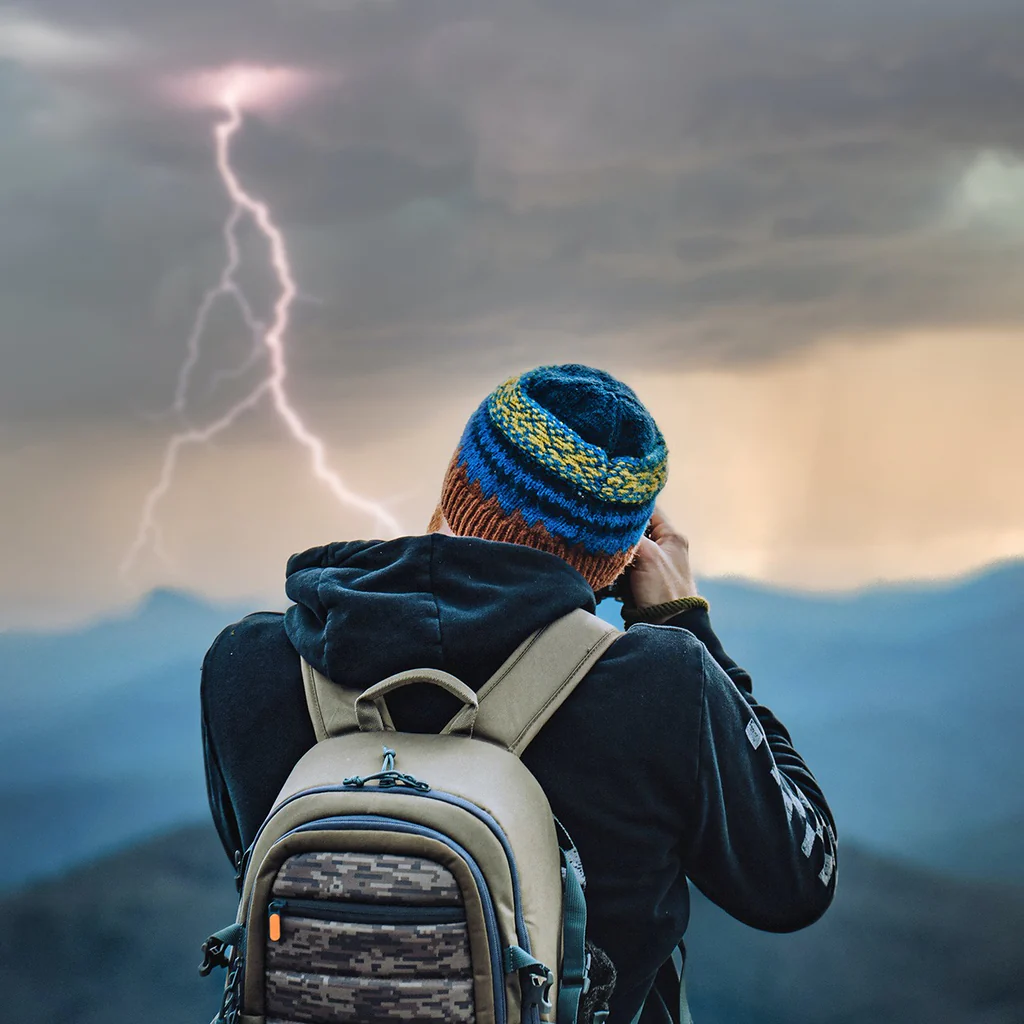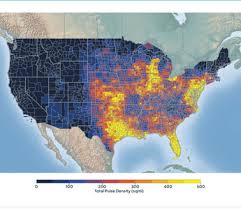For photographers, capturing the dramatic beauty of lightning strikes during a storm can result in breathtaking images. However, timing is everything when it comes to photographing these fleeting moments.
To ensure you’re in the right place at the right time, real-time lightning strike map apps and websites are invaluable tools. These platforms provide up-to-the-minute data on lightning strikes, allowing photographers to monitor storms and predict where the next strike might occur.
Whether you’re a professional or an amateur storm chaser, these tools enhance your ability to capture the perfect shot while staying safe. In this guide, we’ll explore the 5 best real-time lightning strike map apps and websites that will help you track storms and elevate your photography.
Read More: 5 Best Real-Time Lightning Strike Map Apps and Websites for Photographers to Monitor Storms
Capture the Power of Lightning with the Right Tools
Photographing lightning is a thrilling yet challenging endeavor that requires both skill and the right tools. The unpredictable nature of storms means photographers must be prepared to capture lightning in all its power and beauty.
Real-time lightning tracking apps and websites are essential tools for anyone looking to photograph storms. These platforms provide accurate, up-to-the-minute information on lightning strikes, storm movement, and weather conditions, giving photographers a distinct advantage.
With the ability to predict the next strike and position yourself safely, you can capture the raw, electrifying moments of nature’s most dramatic displays, turning a fleeting event into a stunning visual masterpiece.
Live Real-Time Lightning Map – Track Strikes Instantly
A live real-time lightning map is an essential tool for anyone looking to track lightning strikes as they happen. These maps provide instant, accurate data on lightning activity, allowing users to monitor storms in real-time.
Whether you’re a photographer aiming to capture a perfect strike, a storm chaser, or someone seeking to stay informed during a thunderstorm, these maps offer a clear view of lightning patterns, strike locations, and storm movements.
With the ability to see lightning strikes as they occur, you can better anticipate where the next strike will land, ensuring you’re in the right place at the right time while staying safe.
Photo Expert – The Best App for Tracking & Photography
Photo Expert is a top-rated app designed specifically for photographers who want to track weather conditions and capture stunning lightning shots.
Combining advanced storm tracking features with intuitive photography tools, this app gives you real-time lightning alerts, detailed strike maps, and weather overlays—all in one place.

What sets Photo Expert apart is its ability to integrate camera settings advice based on current conditions, helping users fine-tune their shots on the fly. Whether you’re chasing a thunderstorm or planning a moody outdoor shoot, Photo Expert ensures you’re prepared, informed, and in control.
EarthNetworks.com – Track Lightning Anywhere
EarthNetworks.com offers a comprehensive suite of tools for real-time lightning tracking, making it an invaluable resource for photographers and storm enthusiasts.
At the core of their offerings is the Total Lightning Network, which detects both in-cloud and cloud-to-ground lightning strikes with exceptional accuracy. This dual detection capability enhances the precision of storm tracking and improves lead times for severe weather warnings.

One of their standout tools, Sferic Maps, provides a web-based visualization and alerting system that displays real-time weather data, including lightning strikes. It features customizable lightning range rings, allowing users to assess the proximity of lightning to specific locations.
The color-coded rings indicate the severity of lightning activity, helping users make informed decisions quickly.
LightningMaps.org
LightningMaps.org is a powerful, community-driven platform that provides real-time lightning strike data from around the world. It operates in conjunction with Blitzortung.org, using a network of volunteer-operated sensors to detect and display both in-cloud and cloud-to-ground lightning strikes.
The site offers a dynamic, live map that updates instantly, allowing users to watch storm activity unfold in real time. For photographers, this tool is invaluable for anticipating where lightning may strike next and planning shots accordingly.
Its clean interface, fast updates, and accessibility on both desktop and mobile browsers make it a favorite among storm chasers and weather enthusiasts worldwide.
Blitzortung Lightning Monitor
Blitzortung Lightning Monitor is a free, community-powered lightning tracking app designed for Android users. It provides real-time lightning data sourced from the Blitzortung.org network, offering a dynamic map that displays lightning strikes across various regions, including Europe, the Americas, Asia, Africa, and Oceania. Strikes are color-coded based on their occurrence time, allowing users to quickly assess storm activity.
My Lightning Tracker
My Lightning Tracker is a highly rated, user-friendly app designed to help you monitor lightning strikes in near real-time. Available for both Android and iOS devices, it offers a sleek interface and a suite of features tailored for photographers, hikers, storm chasers, and weather enthusiasts.
Key Features
Global Lightning Detection: Track lightning strikes worldwide as they happen, with a live map that updates instantly.
Storm Hotspot History: Access historical data to identify areas with frequent lightning activity, aiding in planning and safety.
Customizable Alerts: Receive notifications when lightning is detected within a specified radius of your location, ensuring timely awareness.
Weather Radar Integration: Monitor approaching storms with integrated radar views, providing a comprehensive understanding of weather patterns.
Social Sharing: Easily share lightning strike information with friends and family, keeping everyone informed.
Lightning Tracker & Alerts
Ad-Free Pro Version: Upgrade to the Pro version for an uninterrupted experience, including additional features like Apple Watch support.
How to Capture Lightning Like a Pro
Capturing lightning in a photograph isn’t just about luck — it’s about timing, technique, and the right gear. First, safety comes first: never shoot in open areas during a storm. Use a sturdy tripod to keep your camera still and a wide-angle lens to cover more of the sky.
Set your camera to manual mode, use a low ISO (100–400), and start with an aperture around f/8 to f/11. For shutter speed, go for long exposures — between 10 and 30 seconds — to increase the chances of catching a strike.

If your camera supports it, use a remote shutter or intervalometer to take continuous shots. With patience and persistence, you’ll nail that electrifying masterpiece.
Why Use a Camera Trigger for Lightning Photography?
A camera trigger is a game-changer for lightning photography because it removes the guesswork and drastically improves your success rate. Lightning is unpredictable and often lasts only a fraction of a second — too fast for human reflexes.
A trigger senses sudden changes in light or infrared signals and automatically fires your camera’s shutter the moment a strike is detected. This ensures you catch even the quickest bolts without needing to rely on long exposures alone.
Many modern triggers are compact, highly sensitive, and compatible with a wide range of cameras. For serious storm photographers, it’s the difference between missing the shot and nailing it perfectly every time.
Step-by-Step Guide to Capturing Lightning Using a Camera Trigger
- Start by mounting your camera securely on a strong, stable tripod to prevent motion blur.
- Connect a reliable lightning trigger like the MIOPS Smart+ to your camera’s hot shoe or trigger port.
- Activate Lightning Mode—this feature detects flashes in the sky and snaps the photo instantly, so you won’t miss a strike.
- Use a real-time lightning strike map to scout out storm hotspots and plan your shoot location in advance.
- Always prioritize safety: stay inside your vehicle or a covered area while shooting.
- With a smart trigger and live lightning data, you can safely capture dramatic lightning photos with precision and ease.
Stay Safe While Chasing Lightning
Always Check the Weather: Before heading out, make sure the storm is safe to chase. Use reliable weather apps and lightning trackers to monitor real-time storm activity.
Choose Safe Locations: Avoid open fields or tall, isolated structures. A vehicle or a well-constructed building provides the best shelter from lightning.
Keep a Safe Distance: Stay at least 10 miles away from the storm’s core. You don’t need to be right under the action to capture stunning shots.
Stay Inside Your Car: If you’re close to a storm, your car is the safest place. It acts as a Faraday cage, directing lightning safely around you.
Avoid Using Metal Gear: Don’t hold metal objects, like tripods, while outside. Lightning is more likely to strike metal, and it’s best to keep it grounded.
Frequently Asked Questions (FAQs)
What is the best camera for lightning photography?
For lightning photography, a DSLR or mirrorless camera with manual settings is ideal. Look for cameras with fast shutter speeds, low noise at high ISO settings, and the ability to use a remote trigger for long exposure shots. Popular choices include Canon EOS series, Nikon D-series, and Sony Alpha series.
Do I need a tripod for lightning photography?
Yes, a tripod is essential for keeping your camera stable during long exposure shots. A sturdy tripod prevents camera shake and ensures sharp, clear images, especially when capturing the fast-moving lightning strikes.
How do I set up my camera for lightning photography?
Set your camera to manual mode, use an aperture of f/8 to f/11, and a low ISO (100–400) to reduce noise. Shutter speed should range from 10 to 30 seconds for long exposure. Set your camera on continuous shooting or use a remote trigger to capture strikes automatically.
What is the best time to photograph lightning?
Lightning is most common during thunderstorms, typically in the late afternoon or evening. Monitor weather apps and lightning maps to find active storms in your area. Avoid shooting directly in the storm’s core to stay safe.
What is a camera trigger, and why do I need one for lightning photography?
A camera trigger is a device that senses lightning strikes and automatically triggers your camera’s shutter. It allows you to capture lightning in real time without having to press the shutter button manually, which is essential since lightning strikes happen so quickly.
Conclusion
Capturing lightning through photography is a thrilling yet challenging experience that requires the right tools, techniques, and a focus on safety. By using equipment like a sturdy tripod, camera triggers, and lightning maps, you can greatly increase your chances of capturing dramatic and awe-inspiring images of nature’s power.

